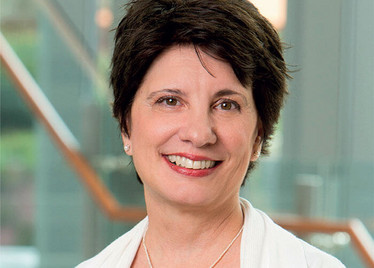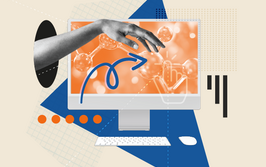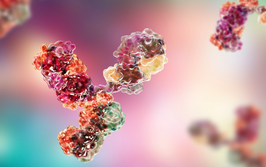Getting to Grips with the E&L Threshold
Did you know the PQRI has released new recommendations on extractables and leachables in parenteral drug products?
Stephanie Vine | | 8 min read | Practical

Extractables and leachables (E&L) have been a headache for drug manufacturers for years. Identification and analysis of E&L is complicated – and the challenges aren’t getting any smaller with an increasing diversity of drug modalities. Back in 2006, the Product Quality Research Institute (PQRI) issued recommendations on safety thresholds and best practices for E&Ls in orally inhaled and nasal drug products. Now, they have released new recommendations: “Safety Thresholds and Best Demonstrated Practices for Extractables and Leachables in Parenteral Drug Products (Intravenous, Subcutaneous, and Intramuscular).”
Given the complexity of the topic, the document has been years in the making. Here, we find out more from Diane Paskiet, Director of Scientific Affairs at West Pharmaceutical Services, who has been involved with PQRI for nearly 20 years.
How much work went into pulling these recommendations together? And how long did it take?
Developing a comprehensive recommendation document like this takes a long time. In this case, we needed nearly 10 years to gather data, you need a lot of input – and, ultimately, consensus on the final document. It’s also worth remembering that PQRI relies on volunteers from industry, academia and regulators. To develop the document, we had to draw on volunteers with extensive backgrounds in toxicology and analytical chemistry. We had to develop a proposal and work plan, and get materials donated from different suppliers. We compiled a database of over 600 extractable and leachable chemicals as part of the safety assessment to support the threshold, and we had multiple sub teams that generated data on the donated materials, as well as toxicologists who developed the safety thresholds.
Gathering all this evidence and data has been a long journey! Well over a hundred people have been involved with this – which is a lot of people when you need consensus!
How have conversations around primary packaging changed in the last five years?
In general, the materials used in pharmaceutical packaging have remained the same for decades, except for aluminium silicate glass, which is a more recent development that improves strength and reduces the risk of delamination. However, drug modalities are changing significantly, and we need to know if traditional packaging materials are suitable. In particular, biopharmaceuticals can be very sensitive, and issues with E&Ls can affect product quality; for example, through degradation, modification, or aggregation. The increase in biologic product diversity and complex dosage forms introduces new risks for safety and compatibility, as well as challenges in packaging performance and protection of the contents.
In short, we need to consider the fact that traditional packaging solutions were never designed with antibody drug conjugates, RNA therapies, and other emerging modalities in mind.
Why is it so important to get packaging right?
Treatments and cures would not be possible without the right packaging – or without the right safety and compatibility studies. In some cases, you also need a device to administer the drug to the patient. There have been many conversations on the topic focusing on the scientific and regulatory issues surrounding drug-device combinations. The regulation here is evolving all the time. Add to that the fact that there are increasingly complex products coming down company pipelines and you can see there’s still a lot of work to be done in understanding E&L risk.
The science of packaging is always evolving too. I’ve been working in this sector for over 30 years. At the time, you always think you know what you need to know but then everything changes; we are continually learning about how drug or biological products may need to be stored, protected, and delivered. The potential for chemical migration, leachable reactivity, or surface interaction may not be easily discerned and can affect product quality. The most important thing is to ensure that packaging remains both suitable and safe.
What’s included in the new recommendations?
The document includes a framework for the toxicological evaluation of leachables for parenterals, and best practices for the analytical evaluations of E&Ls. Something that we have peppered throughout the document – because it’s so important (and something that the regulators are keen on) – is that drug developers need to engage with regulators early on. There is increasing complexity in both parenteral products and closure systems – and justification and proper documentation are expected, including information on thresholds, extraction conditions, solvents, and so on. The E&L analysis should be discussed early with regulators so that drug developers can be sure that the regulators will have the information they will eventually need to review the final drug dossier for approval. You don’t want to get to the end of your drug development program and then find out that there were risks in your packaging and analysis strategy that you overlooked or didn’t approach in the right way.
One of the significant recommendations we make in the paper pertains to the concept of thresholds. There are three thresholds: the safety concern threshold, the qualification threshold, and the analytical evaluation threshold. The former two are safety related and the latter is for compound identification.
The safety concern threshold (SCT) is 1.5 µg/day and is used to derive the analytical evaluation threshold. The SCT value was justified from the evaluating of over 600 potential leachables using existing toxicological qualification approaches. Below this threshold, the dose is so low that the safety concerns should be negligible, but that does not guarantee it is safe! The threshold is just for identification and reporting for assessment. Above this threshold, you need to identify and assess your leachable for toxicological concerns. There are certain compounds that are known to be a high risk, which may be below the analytical evaluation threshold and may need to be specifically sought depending on the material chemistry.
The qualification threshold is recommended at 5 µg/day, providing there is no genotoxic or carcinogenic potential, but it is important to consider the potential for sensitization and irritation.
The paper provides best practices for extraction studies and assessments, covering materials for constructing finished components, and complete packaging systems. In the document and supporting publications, we show how to generate the extractable profiles and provide key considerations, such as the sample of solvent ratio, conditions of exposure, and technologies for analysis and their sensitivity. Once you have your extractables profile, you can evaluate and build out your leachables studies.
Overall, it’s a difficult topic to summarize – the science is complex (and the paper is almost 100 pages)! I encourage people to read the recommendations for the full details in the hope that it helps applicants with their E&L studies.
Where else is there room for improvement?
There is always going to be a need for new best practices in this field. Science evolves, regulations change, and new modalities emerge. One area we are looking at in a focus group is combination products, which is tricky because you need to merge together qualification approaches for devices and drugs. We may have future recommendations in this area, but the working group is only in the planning stage.
What are the benefits of volunteering for an organization like the PQRI?
For me, the knowledge enrichment is very rewarding – and this comes from sharing information and listening to the experience of others. There is a growing diversity in the intended use for packaging and you can’t experience everything yourself – you need to learn from others. For example, if you’re working in a packaging company then it’s important to hear opinions from drug manufacturers, and vice versa.
The world of E&L is dynamic. Simulation and modelling are emerging and it’s possible that things may look very different five years from now. Even if we look back on the last two years, drug development has changed significantly – with new technologies and a move to digitalization. Having more data and being able to assess risks to products and patients early in pharmaceutical development, could lead to changes in E&L analysis.
Thresholds as defined by PQRI
- Safety Concern Threshold. The threshold below which a leachable would have a dose so low as to present negligible safety concerns from carcinogenic and noncarcinogenic toxic effects.
- Qualification Threshold. The threshold below which a given leachable is not considered for safety qualification (toxicological assessment) unless the leachable presents structure activity relationship (SAR) concerns.
- Analytical Evaluation Threshold. The threshold at or above which a chemist should begin to identify a particular leachable and/or extractable and report it for potential toxicological assessment.
- PQRI, “Safety Thresholds and Best Demonstrated Practices for Extractables and Leachables in Parenteral Drug Products (Intravenous, Subcutaneous, and Intramuscular)” (2022). Available at: www.pqri.org

Making great scientific magazines isn’t just about delivering knowledge and high quality content; it’s also about packaging these in the right words to ensure that someone is truly inspired by a topic. My passion is ensuring that our authors’ expertise is presented as a seamless and enjoyable reading experience, whether in print, in digital or on social media. I’ve spent fourteen years writing and editing features for scientific and manufacturing publications, and in making this content engaging and accessible without sacrificing its scientific integrity. There is nothing better than a magazine with great content that feels great to read.



















